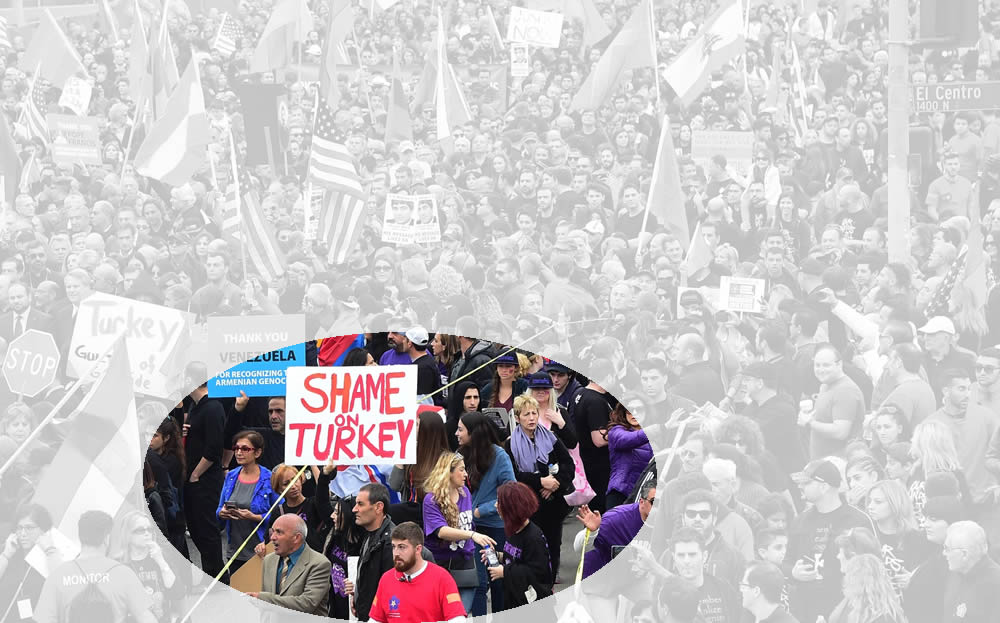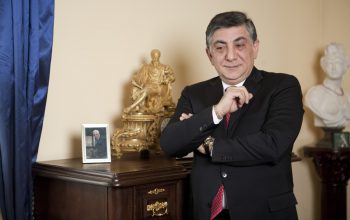Despite the grave existential threats facing Armenia and Artsakh, it is apparent that a very strong national apathy exists among the vast majority of Armenians in Armenia and the Diaspora.
For evidence of this, one only needs to look at the overall poor attendance at this year’s Armenian Genocide commemoration events in the Diaspora and Armenia or the general laissez-faire attitude prevalent in Yerevan’s crowded cafés and restaurants. Most Armenians have simply checked out from caring about Armenia and its future.
On a superficial level, this may appear to be an ominous and disheartening phenomenon. Afterall, if the vast majority of a People are so disengaged about the future of their nation that they cease being actors and rulers of their own fate, the destiny of the nation is left to chance, or even worse, external forces, to determine.
And that’s exactly what seems to be transpiring today, with the Pashinyan regime’s capitulation to Turkish-Azeri demands becoming seemingly greater by the minute. The continuing four month old blockade of Artsakh, reports from the latest round of “negotiations” between Armenia and Azerbaijan or Turkey’s recent prohibition of civilian Armenian flights over its airspace categorically show that the Turkish-Azeri tandem’s appetite has no bounds, despite the most capitulatory and defeatist Armenian government one could have ever imagined being in power in Yerevan.
And while on the surface, it may appear that this current freefall in Armenian history is a result of general Armenian apathy, this abysmal nosedive actually has its roots in a recent period of Armenian history during which we saw too much Armenian engagement. As the saying goes, there is in fact “too much of a good thing.”
In the few months and years before April 24, 2015, the hundredth anniversary of the beginning of the Armenian Genocide, there was a visible awakening of interest in Armenia and all things Armenian by a much larger segment of the Armenian populace than usual. This sort of massive “awakening” had happened only a couple times in the previous century, examples being 1965, the fiftieth anniversary of the Armenian Genocide and 1988 after the disastrous earthquake in Armenia. In between, the Armenian people, as a whole, generally slept.
During vast stretches of the last century, only a small percentage of Armenians, such as those who are members or supporters of the Armenian Revolutionary Federation and other nationalist groups, concerned themselves daily with the fate of the Armenian nation.
It was only this small segment of the general Armenian populace, composed of a relatively well-informed, well-meaning, and well-organized minority that set the agenda for and bore the torch of the Armenian cause. The unfortunate reality is that throughout history, the vast majority of Armenians have not cared enough to concern themselves with a national agenda. This was the case a century ago before the Armenian Genocide and is the case now.
In 2015, at the hundredth anniversary of the Armenian Genocide, a large segment of the otherwise disinterested Armenian populace, spurned by the realization that a hundred years had passed since the Armenian Genocide, and they themselves had done very little if anything to pursue justice, all of a sudden awakened and joined the rest of us. I personally witnessed dozens of family, friends, and acquaintances marching in Los Angeles on April 24, 2015 who in previous years would have likely been in Las Vegas or Palm Springs on April 24, too ashamed to open their businesses but too indifferent to actually attend a protest or commemoration event in the past.
All of a sudden, everyone pretended to care about Armenia, the Armenian cause, and everything Armenian. It didn’t hurt that a slew of celebrities, not just the Kardashians, but others such as Conan O’brien and the late Anthony Bourdain visited Armenia and made Armenia and Armenians household buzzwords. This sudden groundswell of interest in everything Armenian provided the perfect fertile ground for a populist, foreign funded yellow journalist named Nikol to use as an amplifier and finally succeed in manifesting a color revolution in Armenia.
Most people in Armenia, and more so in the Diaspora, barely knew who Nikol Pashinyan was, what and who funded him for decades, or what his ambitions were. It didn’t matter. All of a sudden, everyone knew everything about Armenia and had an opinion. Nevermind that they all had the same fabricated opinion that was actually a meticulously crafted narrative spoonfed to them via mass media and other means of manufactured consent.
The groundswell of artificially awakened Armenian masses was just too enormous to overcome. The masses of people who for years had either sold their votes to the highest bidder in Armenia, or lived oblivious lives in the Diaspora all of a sudden somehow just knew that the former authorities were bad and Nikol was the savior. It didn’t matter if the small minority of Armenians who had followed developments closely for the past several decades didn’t share in the newly awakened masses’ enthusiasm or euphoria. They were just “elitists” and didn’t understand what the “people” wanted.
This groundswell of artificial engagement by the masses brought about the worst self-inflicted devastation the Armenian nation has ever experienced.
Today, it is apparent that the deluge of the masses has subsided once again. In the Diaspora, the thousands of youth who wore “Duxov” hats and drove around town with “Haghtelu enq” and “Defend Armenia” placards on their cars have gone back to focusing on the latest fashion trends and money-making schemes. And in Armenia, the tens of thousands who flooded the streets chanting “Merzhir Serzhin” have either found ways to cross the U.S.-Mexican border to join their compatriots in Glendale or are busy with the artificial economic boom in Yerevan caused by the tens of thousands of Russian expatriates fleeing the Russian-Ukrainian war.
The “Resistance” movement in Armenia is recalibrating after its perceived failure to “awaken Lao” last year by not being able to gain widespread appeal for ousting Pashinyan’s regime.
But, it may not be a bad thing after all that Lao hasn’t awoken.
The last time Lao was awake, sometime between 2015 and 2018, he set the stage for a catastrophe the likes of which the Armenian nation hadn’t seen in a century.
Perhaps it may be best for the rest of us to just let Lao sleep and do what we’ve done, day in and day out, for the last century. A disengaged general Armenian populace may be exactly what is needed right now for the well-educated, well-meaning, and well-organized minority to be able to correct the course of Armenian history and pull it up from the nosedive caused by an artificially engaged majority that only awakens from its deep slumber once every fifty years to express its loud opinion on how to fly the plane, with often disastrous ramifications.




